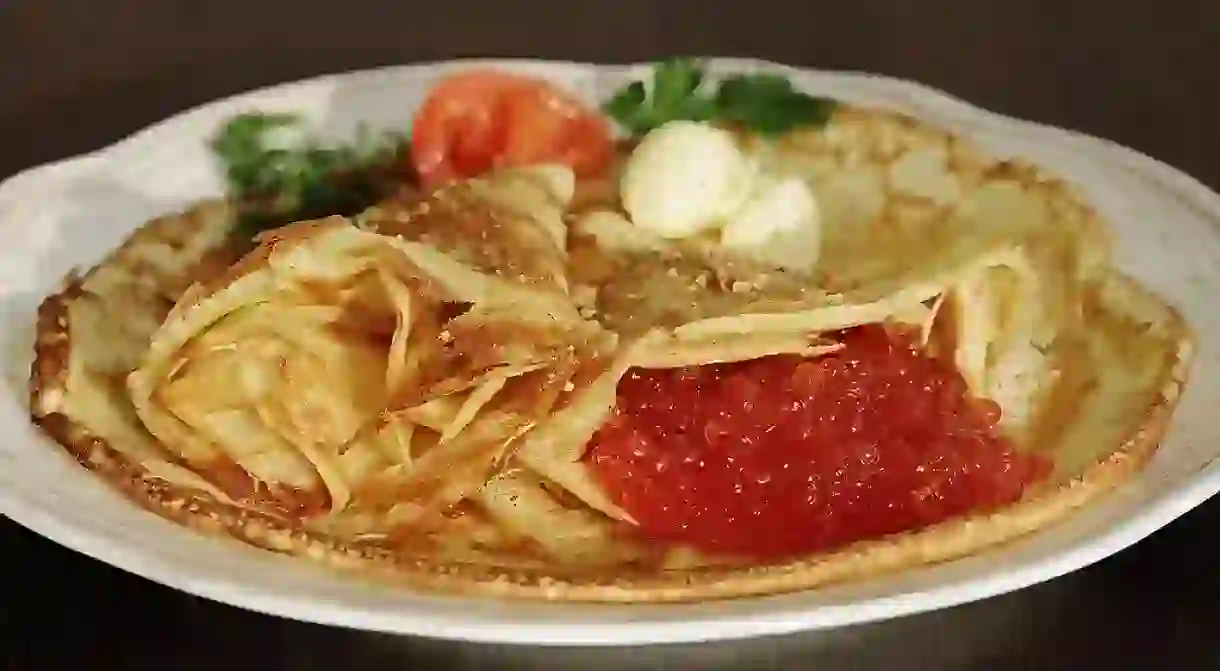6 Things You Didn't Know About Maslenitsa, Russia's Pancake Week

From 20th till 26nd February, 2017, Russians celebrate Maslenitsa. Also known as “butter week” or “pancake week”,’ it’s a way to welcome spring by eating tons of blini pancakes and engaging into exuberant festivities. But there is more to it, Maslenitsa has surprising origins, sacred messages and bizarre traditions. Here are six things we bet you didn’t know.
Pagan roots of Maslenitsa
Although coming from pagan traditions, Maslenitsa was the only holiday recognized by the Russian Orthodox church. The name Maslenitsa or “butter week” was given to it only in the 17th century, after it had been officially added to the list of church holidays. Before that Christians called the last week before Lent “meatless”, as meat wasn’t allowed by the Orthodox tradition.

Pancakes are symbolic
As you might have guessed, Maslenitsa is all about pancakes or blini (they are more like french crepes, rather than fluffy American pancakes). They are freshly made every day and supposedly symbolize the Sun, so by eating pancakes, people consume its warmth and energy. Russians try to eat as many of those as possible, especially before the approaching seven weeks of the Great Lent.
What a Bear has to do with it
The holiday used to have a pagan name, “Komoyeditsa”, which has multiple theories about it’s origin. According to one of them, this time of year bears, whom ancient Russians called “kom”, were feeling the spring in the air and waking up from hibernation. Since bears were considered masters of the forest, people brought them pancake offerings, as a way to greet spring. So Komoyeditsa may be interpreted as “feeding bears”.

Every day has its way
Every day of the pancake week has its own name and particular rituals but these are rarely observed in present day Russia. In the past on Monday everyone welcomed Maslenitsa by singing and making a straw stuffed effigy, which was to be burnt on Sunday. On Tuesday young people would go out and play or take a sledge ride. On the “sweet day” of Wednesday people would indulge with pancakes and sweets. Thursday was for fist fights and other physical activities. On Friday people visited relatives, particularly mothers in law, while young wives hosted parties on Saturday. Sunday was the climax of it all with public celebrations and abundance of food.
Burning woman
The grand finale of the pancake week is burning the effigy of Maslenitsa, a straw stuffed doll, dressed in female clothes, which marks the imminent end of winter. In the old days people also threw pancakes into the fire as a form of funeral repast for the “dying” winter.

Day of forgiving
The final day of Maslenitsa was the day of forgiving. A day when people ask for the forgiveness of others, forgive all the wrong done against them and with a light heart enjoy the final round of festivities. No wonder Sunday was the most fun. Troika rides, dancing bears, fist fights, fireworks and tons of delicious food!
[jwplayer 6SK7ku88-RnIdcM25]














